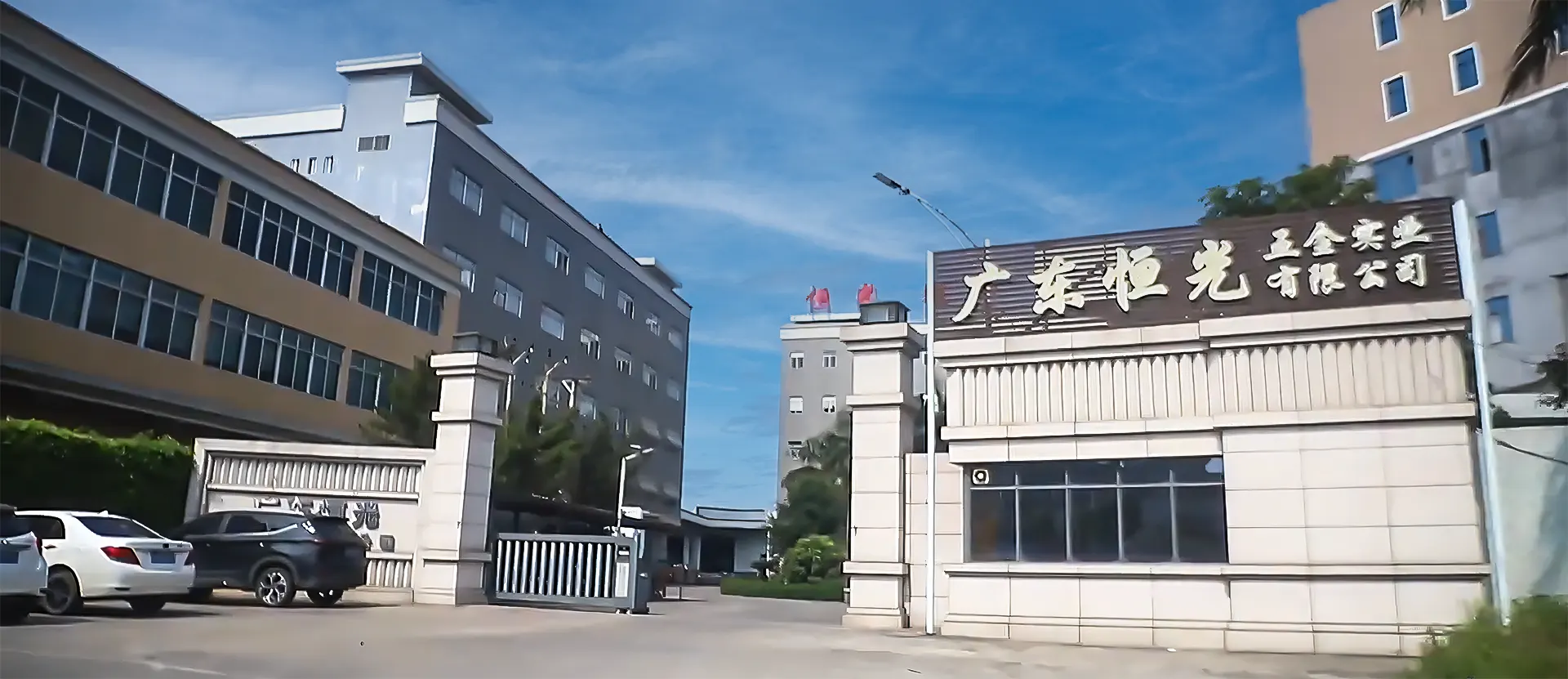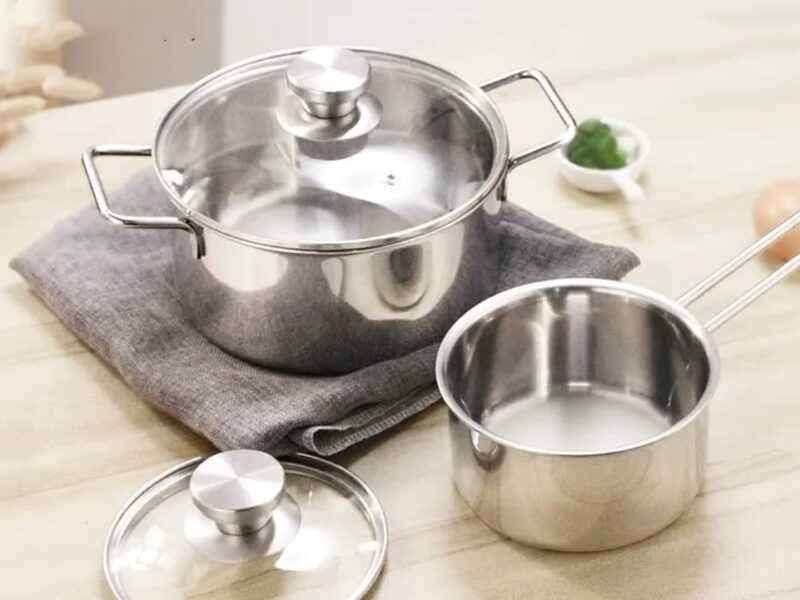
Selecting the appropriate cooking vessels is critical to enhancing the culinary adventure in contemporary kitchens. The two types of most common cooking utensils with exclusive advantages and characteristics on the market are ceramic-coated and stainless-steel types.
Ceramic coated cookware is popular among housewives as it offers good non-stick quality along with ease of cleaning. On the other hand, professional chefs often prefer the use of stainless steel cookware due to its strength and even distribution of heat.
Are ceramic-coated cookware really as safe and convenient as advertised? Do stainless steel cookware have enough advantages in actual use? As a professional stainless steel kitchenware manufacturer, Hengguang will introduce the advantages and disadvantages of these two types of cookware to readers, help you understand which material is more suitable for your kitchen needs, and provide practical advice on use and maintenance.
In the following content, I will simply refer to ceramic coated cookware as ceramic cookware. In fact, if you use the keyword of ceramic cookware in the search engine, most of the products presented are also ceramic coated cookware. The performance of pure ceramic cookware is much worse than that of metal cookware, so it is not meaningful to discuss it. Therefore, this article mainly compares stainless steel cookware and ceramic coated cookware.

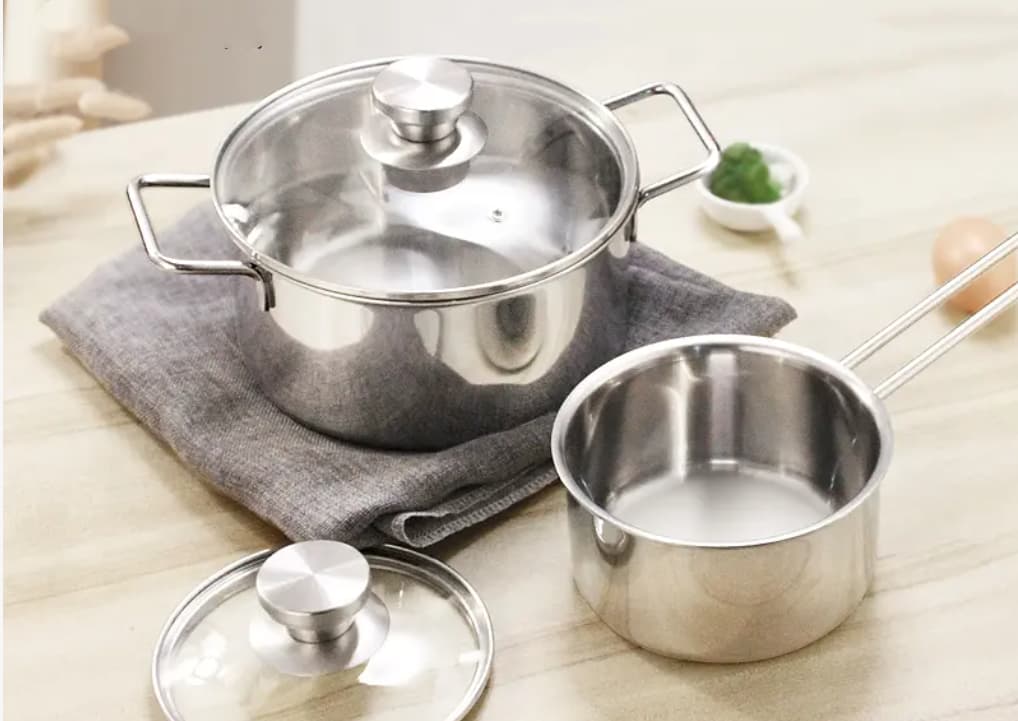
Is Ceramic Cookware Better Than Stainless Steel?
When it comes to choosing cookware, ceramic-coated cookware and stainless steel cookware each have their own unique advantages and limitations. Understanding the properties of both materials can help you choose the best cookware for your needs.
Material Comparison Between Ceramic Coating And Stainless Steel
what is ceramic coating?
Ceramic coating non-stick pans are not actually made of ceramic, but are made by spraying silica sol evenly onto a metal substrate, which forms a high-density smooth coating after drying or heat treatment.This coating is similar to ceramic in appearance and performance, hence the name.As a non-stick coating, ceramic has excellent non-stick properties, making it easy for food to detach from the bottom of the pan, reducing the use of oil when cooking. In addition, ceramic coating does not release harmful substances, so it is considered to be more health-friendly.
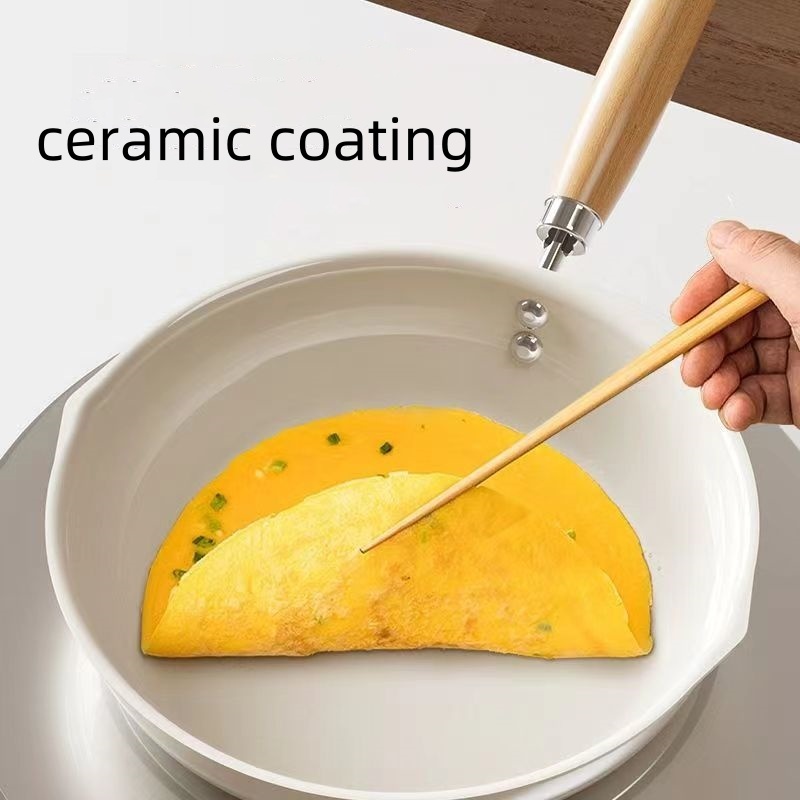
Stainless Steel Cookware Material
Stainless steel is a durable alloy consisting mainly of iron, chromium and nickel. It is extremely resistant to corrosion and high temperatures. The surface of stainless steel cookware does not react with food, making it suitable for a variety of cooking methods and easy to clean.
Thermal Conductivity Comparison
Ceramic cookware is usually based on aluminum, which makes it a good conductor of heat. The high thermal conductivity of aluminum helps to heat evenly, but the ceramic coating itself conducts heat more slowly and may not perform as well as stainless steel at very high temperatures. Although ceramic coatings provide good non-stick properties, they may not perform as well as stainless steel cookware in certain high-temperature cooking methods, such as frying.
In contrast, stainless steel cookware, especially those with multiple layers, usually have better thermal conductivity. Many high-quality stainless steel cookware is designed with an aluminum or copper core at the bottom, which enhances heat transfer, ensures even heating, and helps to accurately control cooking temperatures.
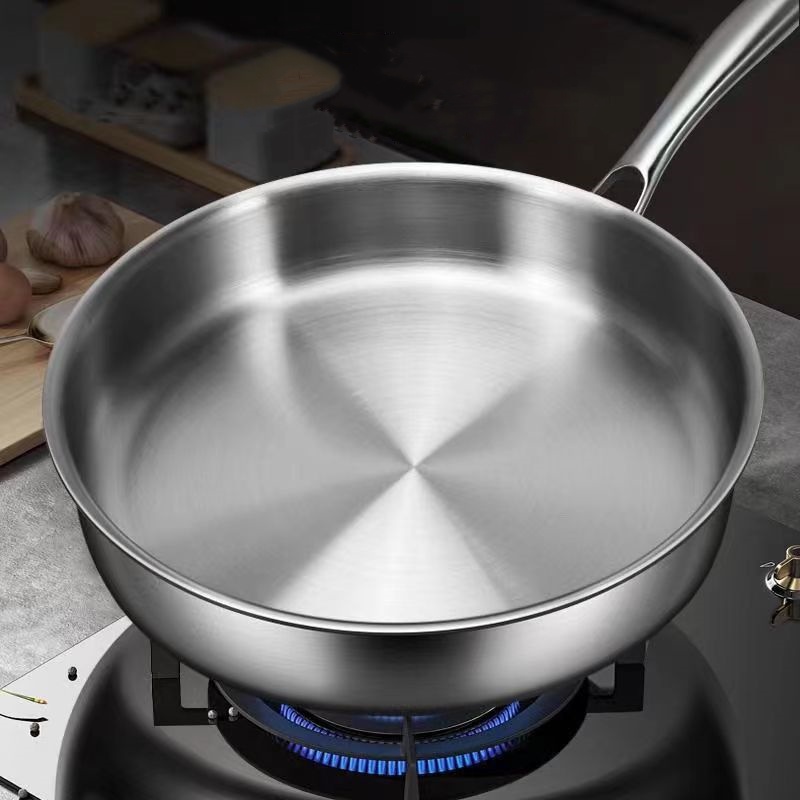
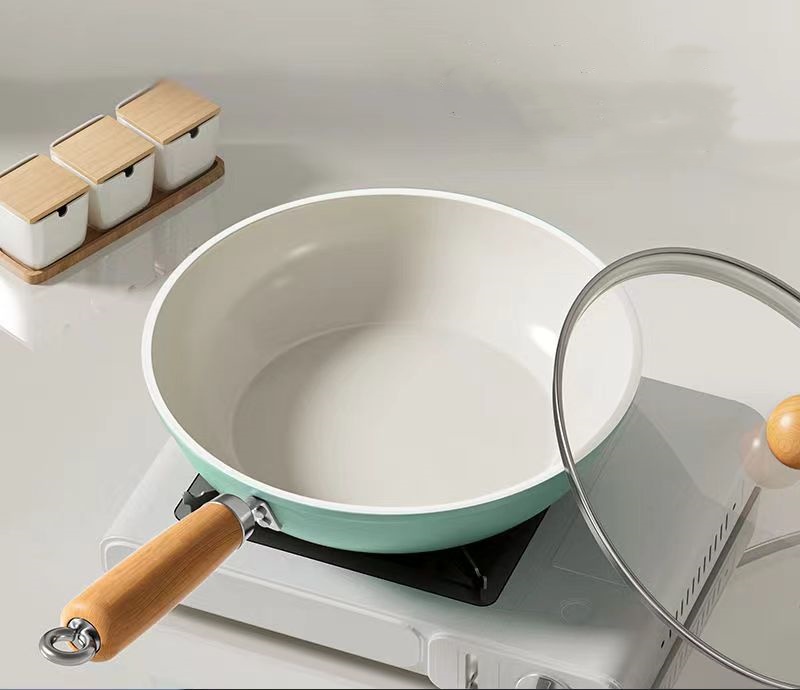
Durability Comparison
Long-term use or improper operation may cause scratches and peeling on ceramic coated cookware.Once the coating is damaged, the metal substrate (usually aluminum) is directly exposed to the food, which may not only affect the cooking effect, but also pose a health hazard.
Thus, ceramic coated cookware usually requires that you refrain from using metal utensils like spatula among others as well as avoid cooking at very high temperatures if its performance is to be maintained.
Talking comparatively, stainless steel cookware tend to stay in service for long from their exceptional durability and rust-resistance properties. It is compatible with high temperatures and diverse cooking techniques such as braising and roasting showing a higher flexibility of use.
Applicable Cooking Methods
Ceramic cookware is best suited for low to medium temperature cooking, such as frying and stewing. Due to the limited high temperature resistance of the ceramic coating, it is not suitable for high temperature frying or long-term high temperature cooking. In contrast, stainless steel cookware can adapt to various cooking methods, including high temperature frying, stewing and baking, due to its excellent high temperature resistance and uniform thermal conductivity.
Safety and Health
Can You Use Metal Utensils On Ceramic Cookware?
Ceramic Cookware: The surface of ceramic-coated cookware is usually designed to be non-stick, aiming to provide a more convenient cooking and cleaning experience. However, caution is required when using metal utensils.Metal utensils may scratch the ceramic coating, causing the coating to fall off or wear away, thus affecting its non-stick performance and the overall durability of the cookware.For this reason, it is advisable to use spatula such as those made of plastic, wood or silicone.
Stainless Steel Cookware: Stainless steel cookware is more durable and can tolerate metal utensils better.
Metal utensils do not cause significant damage to stainless steel surfaces because stainless steel has a higher surface hardness and is resistant to scratches and abrasions.However, it’s still a good practice to use wooden or plastic utensils to maintain your cookware’s best condition and avoid potential scratches.
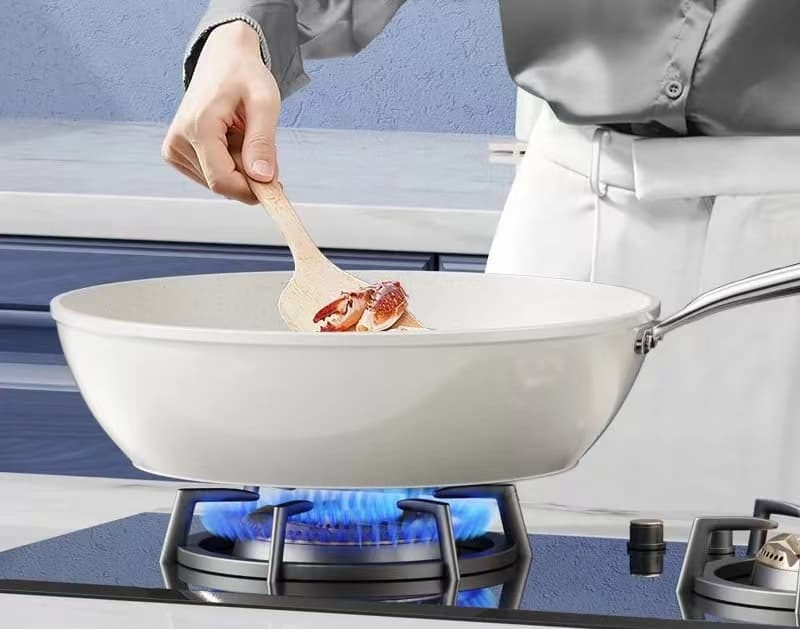
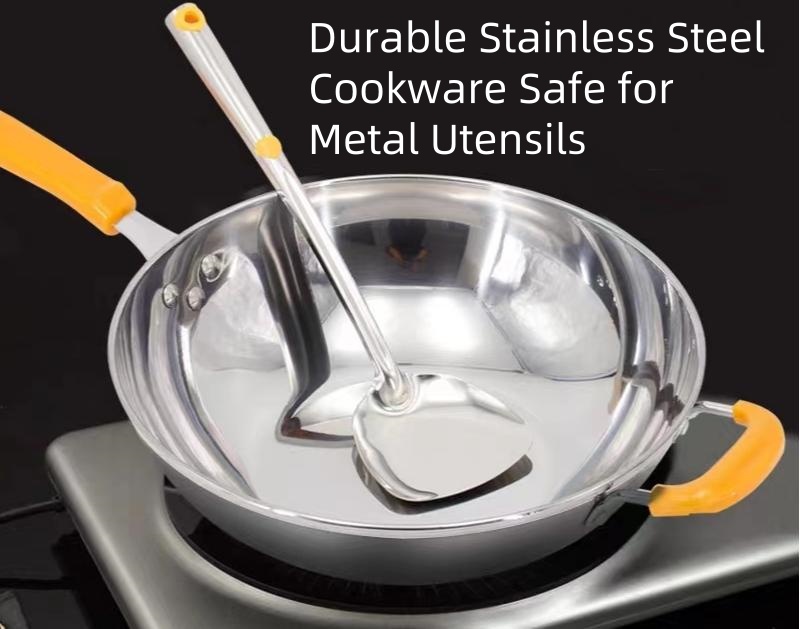
Does ceramic cookware have PFAS?
PFAS refers to a family of chemicals that are used in large amounts for water and oil repellence, but people’s health risks have grabbed attention for a reason. Such chemicals are known to be detrimental to human well-being in terms of causing cancer, liver disorders and even immunological harm here.
These days it seems like all ceramic coated cookware advertises that it is PFAS free. In most cases this is accurate as no conventional PFAS is needed in order to achieve a nonstick effect in a ceramic coating. The material of ceramic coating is mostly silica, free from PFAS. However, one consideration that the buyers of ceramic cookware must keep in mind is that they should read the product’s labels and certification so that they do not end up buying any cookware with PFAS or any other harmful substance.
Cookware Care and Maintenance
How To Care For Ceramic Cookware?
Clean with Care: Once ceramic cookware has been used, allow it to cool and then handwash it with warm water using a soft sponge or a piece of cloth. Do not use steel wool or other cleaning products that can scratch the surface. A small dab of light dishwashing soap may assist in extracting stubborn food particles.
Never overheat: When ceramic coated cookware is being used, care should be exercised not to overheat it. High temperatures could overheat the coating and spoil it. Avoid cooking over high heat as much as possible, especially dry cooking or very high temperature cooking.
Do not use metal utensils: For that reason, it is best to use plastic, wood or silicone utensils in order not to scratch the ceramic coating using hard utensils.
Note when storing: When storage is needed, ceramic cookware does not warp or break, however, do not stack them directly as they can cause friction leading to scratches. Other alternatives include putting paper towels or cloths between pots.
Regular inspection: The condition of ceramic coating should be checked routinely. In the case of the coating starting to peel or crack, discontinue use immediately in order to protect the item from further damage and prevent food contamination.
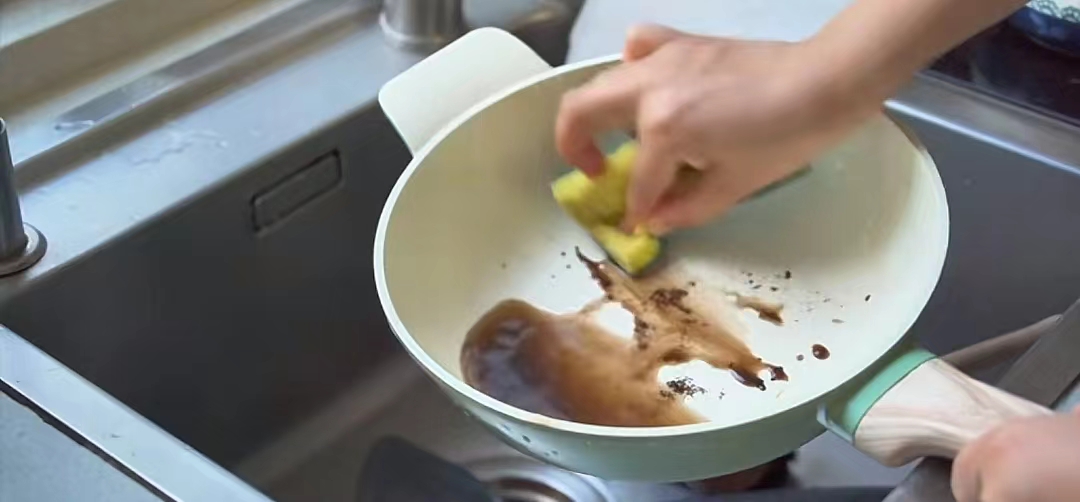
How To Season Stainless Steel Cookware?
Stainless steel cookware is used in various types of cooking because it can withstand high temperatures. To make non-stick properties better and decrease sticking problems, one may think about seasoning (or pre-treating) stainless steel cookware.
1) Wash and dry: Before seasoning, wash stainless steel cookware thoroughly with warm water and dish soap such that it doesn’t have any manufacturing residues on them at all. After washing, dry them completely.
2) Heat the pan: Put the pan on the stove over medium low flame for several minutes to ensure that it heats evenly. Avoid using high temperatures as this may cause warping or overheating in the pan.
3) Grease: Use a paper towel or cloth to apply a small amount of vegetable oil (such as canola or olive oil) to the surface of the pan, especially the bottom. The layer of grease will bond with the stainless steel surface during heating, forming a protective film.
4) Heat the grease: Maintain medium heat until the grease starts smoking after placing back your frying pan again onto medium-low flame. This process helps the grease penetrate the tiny pores of the stainless steel and improve the performance of the pan. Then, turn off the heat and wait for the pan to cool.
5) Wipe off excess grease: At last after cooling down completely wipe out any remaining oil from your frying thing so that its top remains neat.
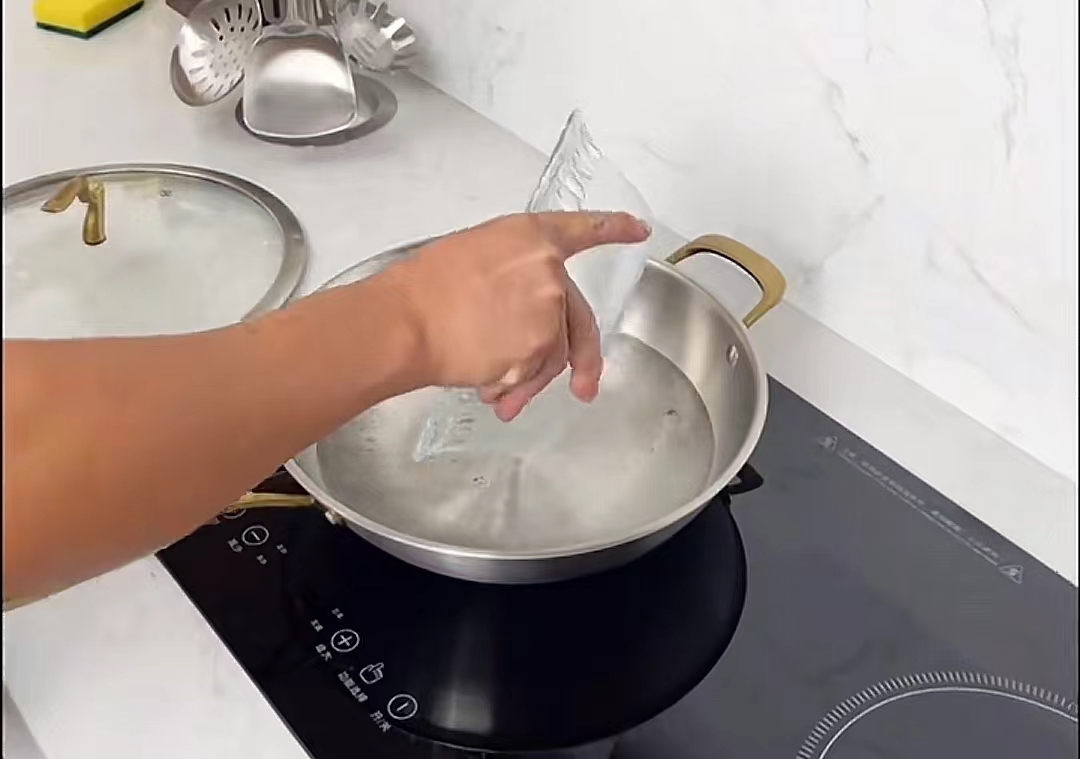
Summarize
Ceramic and stainless steel cookware, both have their own merits and demerits.
Ceramic-coated cookware is suitable for low to medium temperature cooking due to its excellent non-stick performance and easy cleaning characteristics, but it may not perform well under high temperature conditions and is easy to scratch.
Stainless steel pots resist high temperatures well and have good thermal conductivity therefore making them suitable for all types of cooking methods. They are also very durable as well as distributing heat evenly.
Choosing the appropriate utensils depending on particular culinary requirements or individual patterns of usage will significantly enhance your culinary results and understanding about cooking processes.
About Us — Hengguang Kitchenware Manufacturer
Hengguang is a professional stainless steel kitchenware manufacturer with 30 years of OEM & ODM manufacturing experience. We focus on producing high-quality stainless steel kitchenware and pressure cookers, and are committed to providing high-quality custom kitchenware solutions to customers around the world. Hengguang has strong R&D and design capabilities, and can provide personalized customization services according to customer needs, covering product size, materials, functions and other aspects.
Hengguang has its own stainless steel raw material manufacturing plant, so we have more advantages in cookware materials and provide more competitive prices. In the past three decades, our stainless steel cookware and pressure cookers have won the trust of global customers with their exquisite craftsmanship, and are long-term partners of many international brands and wholesalers.
Welcome to contact Hengguang, we will provide you with the best wholesale kitchenware and custom kitchenware service.
